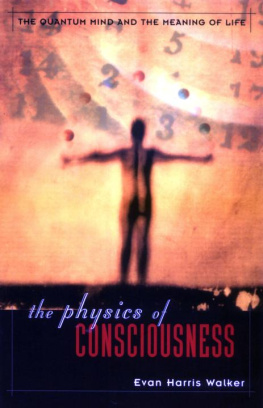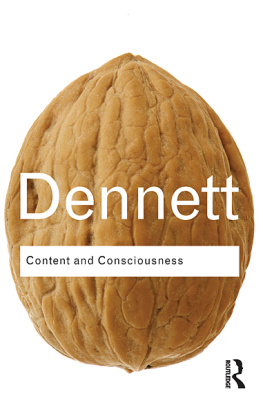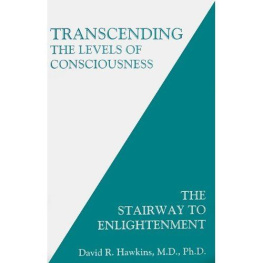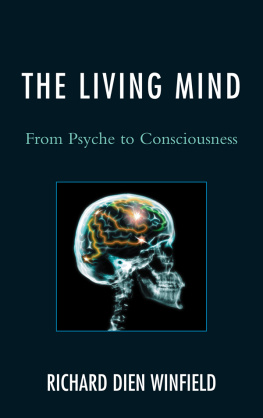TAYLOR - The Hidden Levels of the Mind : Swedenborgs Theory of Consciousness
Here you can read online TAYLOR - The Hidden Levels of the Mind : Swedenborgs Theory of Consciousness full text of the book (entire story) in english for free. Download pdf and epub, get meaning, cover and reviews about this ebook. year: 2011, publisher: Swedenborg Foundation Publishers, genre: Religion. Description of the work, (preface) as well as reviews are available. Best literature library LitArk.com created for fans of good reading and offers a wide selection of genres:
Romance novel
Science fiction
Adventure
Detective
Science
History
Home and family
Prose
Art
Politics
Computer
Non-fiction
Religion
Business
Children
Humor
Choose a favorite category and find really read worthwhile books. Enjoy immersion in the world of imagination, feel the emotions of the characters or learn something new for yourself, make an fascinating discovery.

The Hidden Levels of the Mind : Swedenborgs Theory of Consciousness: summary, description and annotation
We offer to read an annotation, description, summary or preface (depends on what the author of the book "The Hidden Levels of the Mind : Swedenborgs Theory of Consciousness" wrote himself). If you haven't found the necessary information about the book — write in the comments, we will try to find it.
TAYLOR: author's other books
Who wrote The Hidden Levels of the Mind : Swedenborgs Theory of Consciousness? Find out the surname, the name of the author of the book and a list of all author's works by series.
The Hidden Levels of the Mind : Swedenborgs Theory of Consciousness — read online for free the complete book (whole text) full work
Below is the text of the book, divided by pages. System saving the place of the last page read, allows you to conveniently read the book "The Hidden Levels of the Mind : Swedenborgs Theory of Consciousness" online for free, without having to search again every time where you left off. Put a bookmark, and you can go to the page where you finished reading at any time.
Font size:
Interval:
Bookmark:

Douglas Taylor
With an Essay by Reuben P. Bell
Swedenborg Foundation Press
West Chester, Pennsylvania
2011 by the Swedenborg Foundation. All rights reserved. No part of this publication may be reproduced or transmitted in any form or by any means, electronic or mechanical, including photocopying, recording, or any information storage or retrieval system, without prior permission from the publisher.
Library of Congress Cataloging-in-Publication Data
Taylor, Douglas, 1925
The hidden levels of the mind : Swedenborg's theory
of consciousness/Douglas Taylor.
p. cm.
Includes bibliographical references.
ISBN 978-0-87785-340-4 (alk. paper)
1. Swedenborg, Emanuel, 1688-1772. 2. Consciousness.
I. Title.
BX8711.T39 2011
233'.5dc23
2011031336
Edited by Morgan Beard Design and typesetting by Kachergis Book Design
All scripture quotations are taken from the New King James Version.
Copyright 1982 by Thomas Nelson, Inc. Used by permission.
All rights reserved.
Printed in the United States of America
Swedenborg Foundation
320 North Church Street West Chester, PA 19380
www.swedenborg.com
ISBN 978-0-87785-619-1 (electronic)
Beyond our everyday consciousnessthe part of our mind that is constantly processing information and formulating responses, the part that we think of as methere are hidden levels of our mind that exert a constant, often unfelt, influence. Sigmund Freud introduced us to the concept of a subconscious, the part of our mind that is below our conscious awareness and houses our less-than-perfect impulses. But two centuries before Freud, a Swedish scholar named Emanuel Swedenborg (16881772) described what could be called the supra-conscious, higher levels of our mind that are above our conscious awareness and can lift us up above the influence of our subconscious. We use those higher levels by living according to the Divine order as revealed in the Word of God. In this way, we slowly allow the influence of the Lord to enter us and transform our being, a process that Swedenborg calls regeneration.
Emanuel Swedenborg was born as Emanuel Svedberg in Stockholm, Sweden, on January 29, 1688, the third child and second son of Dean Jesper Svedberg and his wife, Sara Behm. At the time of Swedenborg's birth, his father was a professor of theology, and would later become a bishop in the Swedish Lutheran church. When Jesper Svedberg was ennobled by the new queen in 1719, the family name was changed to Swedenborg.
Swedenborg's interest in science was aroused by his brother-in-law, Erik Benzelius, librarian at the University of Uppsala (Swedenborg's alma mater) and a keen student of mathematics and science. After completing his university studies in philosophy at the age of twenty, Swedenborg went on a foreign journey to complete his education. In London, he lodged with various tradespeople, learning their arts and crafts. He studied the works of Newton, introducing them to Sweden; he studied mathematics at Oxford, and conferred at length with the astronomers Flamsteed and Halley. In general, he took every opportunity to meet the world's best thinkers of his day. Looking back on this period in his old age, he recognized it as the beginning of his preparation for his life's work.
After two-and-a-half years in England, Swedenborg visited Holland, France, and Germany. At this time, his personal writings contain plans for fourteen mechanical inventions, including a submersible ship, a universal musical instrument, a flying ship, and a method of psychological analysis.
On his return to Sweden after an absence of five years, Swedenborg collaborated with Christopher Polhem, the great Swedish inventor, publishing at his own expense what is now recognized by the Swedish Academy of Sciences as its first scientific periodical. He soon received an appointment with the government ministry that oversaw the mining industry, and worked there for the next twenty-five years.
This kept him in touch with the work-a-day world, but he was also active in the learned world. He was a pioneer in geology, and he wrote the first Swedish textbook on algebra. In addition, he managed to acquire a European reputation as a first-rank philosopher. From his pen there flowed the following major works: Philosophical and Mineralogical Works; Basic Principles of Nature (the first volume of the three-volume work Philosophical and Metallurgical Works ); The Infinite; Dynamics of the Soul's Domain; and The Soul's Domain , a sequel. As the titles of the last two books indicate, Swedenborg had become increasingly interested in the soul, specifically in a question that intrigued eighteenth-century philosophers: where is the seat or dwelling place of the soul?
In The Soul's Domain (published in 17445), Swedenborg realized that he had gone as far as reasoning from the scientific method could take him. This realization led to the turning point of his life, his transition from being a philosopher to being a theologian. He had always been a Christian philosopher, deploring the secret atheistic materialism that he encountered among a number of his scientific colleagues. His philosophic works were all designed to show that there is a realm of reality above the merely physical. He began exploring the world of spirit at age fifty-five, and he spent the next thirty years developing a remarkable theology that not only explained the way in which the soul and body interact but laid out how that interaction can bring us spiritual growth. This is the subject we will be exploring in this book.
During his lifetime, Swedenborg published eighteen theological works spread across twenty-five volumes. His teachings about the human mind are scattered throughout a number of those works, particularly Secrets of Heaven (often referred to by its abbreviated Latin title Arcana Coelestia ), together with Divine Love and Wisdom , Soul-Body Interaction , and True Christianity . Because there is no one volume on the subject, it can be difficult to get a coherent picture of Swedenborg's philosophy of the mind. The purpose of this book is to gather together these many scattered threads and to show that, taken as a whole, they have a great relevance to our life and happiness.
This book is not intended to make you more efficient or in any other way enhance your standing in this life. The main focus will be on your spiritual life, your preparation for the life after death, where you may continue to grow into greater love and wisdom for eternity. Your life on this earth will not be regarded as an end in itself but a means, a means of helping you become a more spiritual kind of person, that is, an even better person.
In keeping with that purpose, this is not an exhaustive study of every passage Swedenborg ever penned on the subject of our mind. That would be a mammoth task, and one that has been very thoroughly done by the late Reverend Doctor Hugo Odhner in his book The Human Mind . Rather, this is a very general presentation of Swedenborg's concept of the mind, clarifying it and providing a structured framework upon which to hang his other teachings. For those interested in pursuing these ideas further, there are references throughout the book to specific passages in Swedenborg's writings. You may also be interested in one of Swedenborg's shorter works, Divine Love and Wisdom , which goes into greater detail about the levels of creation and the way that they relate to the human mind.
Font size:
Interval:
Bookmark:
Similar books «The Hidden Levels of the Mind : Swedenborgs Theory of Consciousness»
Look at similar books to The Hidden Levels of the Mind : Swedenborgs Theory of Consciousness. We have selected literature similar in name and meaning in the hope of providing readers with more options to find new, interesting, not yet read works.
Discussion, reviews of the book The Hidden Levels of the Mind : Swedenborgs Theory of Consciousness and just readers' own opinions. Leave your comments, write what you think about the work, its meaning or the main characters. Specify what exactly you liked and what you didn't like, and why you think so.












